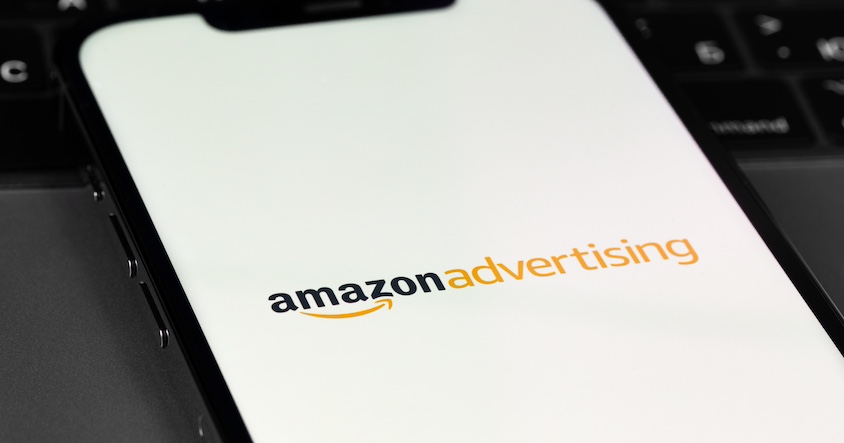Attention please: How to make your products more visible in organic search

Anyone who takes a look around Amazon will quickly realize that the search results are structured according to the same pattern.
And what stands out the most? It is not the organic results, meaning those that simply match the search query well. Rather, the first rows are filled with Sponsored Brands, Amazon’s Choice, and Bestsellers.
But what does all this mean? And how can one obtain such a label for their products? We have taken a look at the first rows of the search results and summarized the most important information for you.
The top positions in the search results on Amazon
Marketplace Pulse examined the structure of search results on Amazon in its study “Marketplace Year in Review 2019.” After all, sellers alone spent $10 billion on advertising with the online giant in the USA.
One can already guess how the search results are structured. They are filled with Sponsored Brands and products that the Amazon algorithm rates as particularly good.
The first row of the search results consists only of Sponsored Brands. In the following rows are products with Bestseller or Amazon’s Choice labels, which clearly stand out from other organic results.
Sponsored Ads
Theoretically, any seller can use Sponsored Products or Brands on Amazon. (For Sponsored Brands, you must, of course, have a brand registered with Amazon.) The difference lies in whether you promote individual products or your brand. The result, however, is the same: increased visibility.
“Sponsored Brands are ads that include your brand logo, a custom headline, and up to three of your products. These ads appear in search results and help increase the recognition of your brand and product portfolio.”
“Help Amazon customers find and buy your products on Amazon with ads displayed in search results and product detail pages.”
Amazon
As part of their study, Marketplacepulse found that only Sponsored Brands were displayed in the first row of the search results. In the second row, three out of five displayed products were sponsored. The relevance of sponsorship is therefore clear, and you should definitely consider whether it is a worthwhile investment for your business so that you do not get lost on page six of the search results (well, to be honest, products are practically invisible starting from page two).
An important aspect of sponsorship is that it is often keyword-based. Your products do not appear randomly; rather, they are shown to users who have searched for a specific keyword. This brings you a significant step closer to your target audience. By being prominently placed in the first rows of the search results, they ensure high visibility of the products and thus a significantly increased likelihood that the product will be purchased – they are the first thing customers see in response to their search query.
The reason for the success of Sponsored Ads lies in the fact that they are not easily distinguishable from regular search results at first glance and are thus perceived as organic, as they look just like normal products. The same applies to Bestseller and Amazon’s Choice products, by the way. However, these are easier to distinguish due to their prominent labels. The sponsored products only have a small, light gray inscription that identifies them as such.

Some important factors for the success of your Sponsored Ads:
The costs for sponsorship are calculated based on the CPC principle. You pay for each click on your ad. Therefore, you should aim to achieve a high conversion rate so that as many customers as possible not only click but also make a purchase.
Bestseller
In the search results, some products feature a prominent orange badge with the label ‘Bestseller.’ When you hover over it with the mouse, the category in which the product is ranked number one among bestsellers is displayed.

When searching for smartphone cases, for example, a bestseller from the category “Waterproof Phone Cases” appears. By clicking on the category, you get a ranking of the bestsellers. Amazon’s headline on this page states that here “our most popular products, based on orders” are listed and that these are “updated hourly.”
But what is really behind the label?
Amazon does not reveal all the details here either, but a few things are clear:


Amazon’s Choice
Since 2017, the Amazon’s Choice label has also been available on the German marketplace. It was originally developed to simplify shopping with Alexa. The smart home assistant always suggests previously ordered items first when placing an order. If it finds no matches, Amazon’s Choice is suggested. Therefore, there is significant purchasing power behind the label.

That the perfect customer journey is a top priority for Amazon is also evident in this label when you look at the well-known criteria for it:
In contrast to bestsellers, Amazon’s Choice is keyword-based. Bestsellers are category-based. Therefore, it is quite possible that you receive multiple bestsellers (from different categories) for your search, but you will only be shown one Amazon’s Choice product.
All these metrics are also relevant for the success of Buy Box. So, try to align all processes towards the customer so that they have a perfect shopping experience.
Conclusion
Sellers on Amazon should definitely engage with the labels and Sponsored Ads. While you can only earn the labels with convincing performance (and good SEO), you can theoretically always invest in ads to be among the top search results.
Both options provide you with significantly higher visibility, which is (almost) invaluable. After all, you want to see your products at the top and not languishing on page 2.
Whether it’s ads or labels, anyone who wants to be among the top sellers must know what they are doing. However, with some preliminary considerations and smart decisions, nothing stands in the way of your ascent.
Image credits in the order of the images: © iiierlok_xolms – stock.adobe.com / Screenshot @ Amazon / Screenshot @ Amazon / Screenshot @ Amazon / Screenshot @ Amazon / Screenshot @ Amazon








